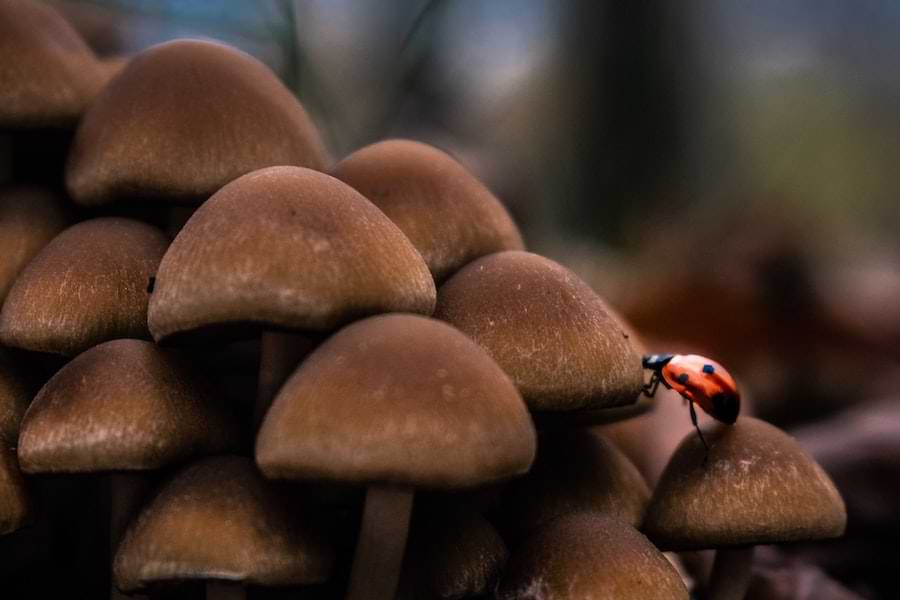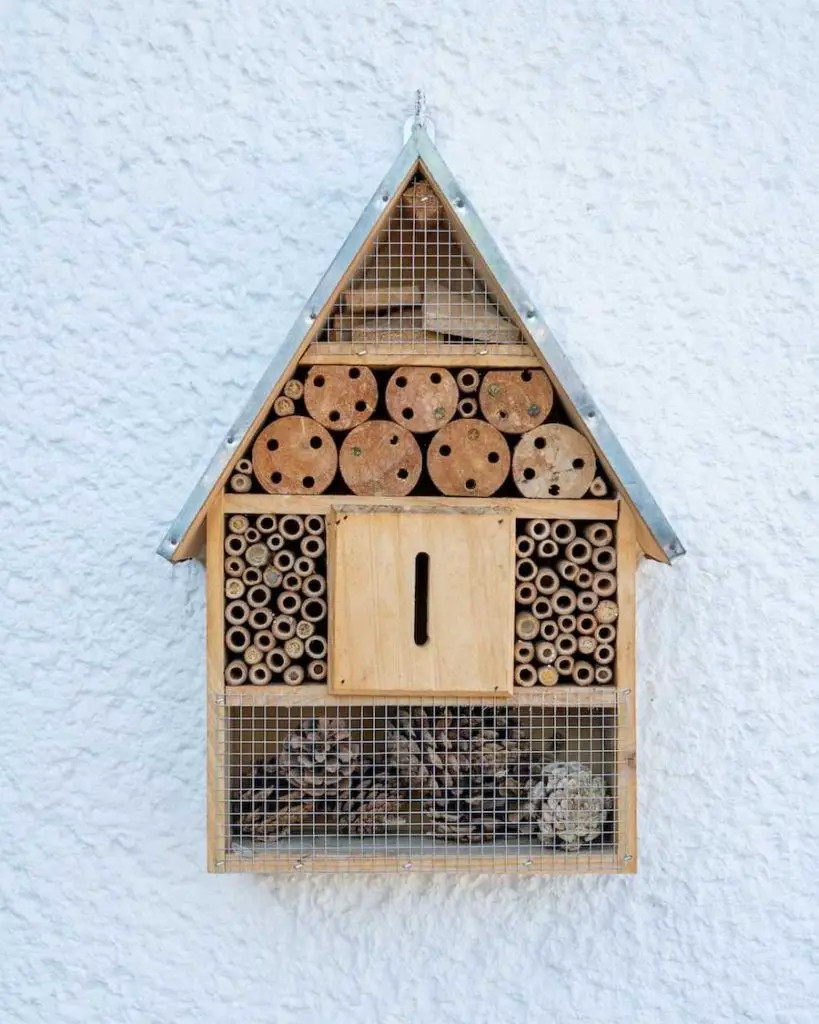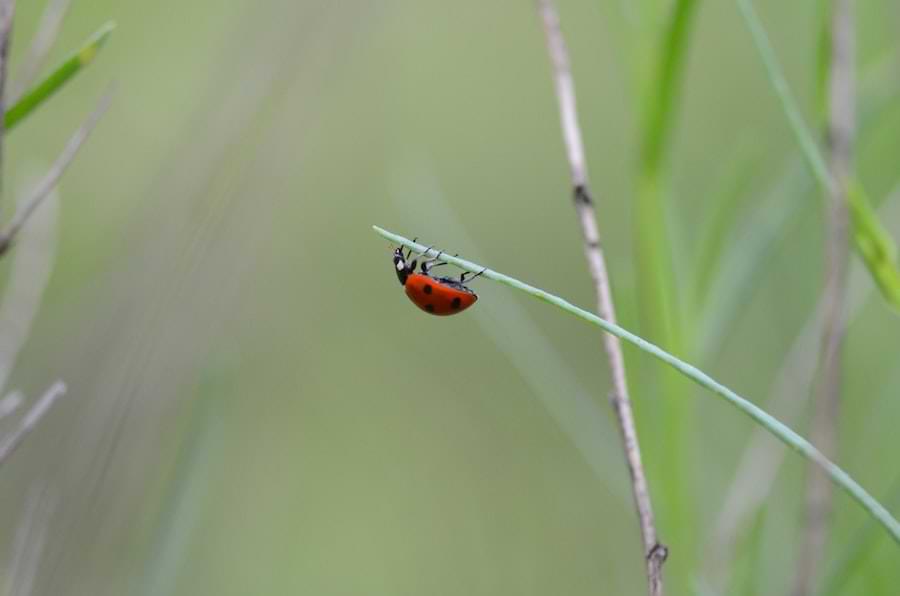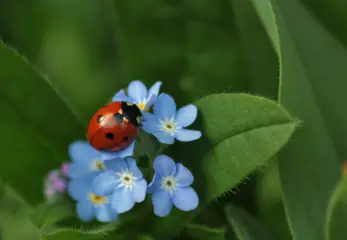Will ladybugs stay in my garden? There are plenty of reasons why you would want Ladybugs in your garden, they’re one of every gardener’s best friends for keeping cherished plants, flora, and fauna safe from unwanted pests.
Not only that but they’re highly prized in agricultural sectors for the same natural benefits they bring with them – apart from in vineyards! Plus who doesn’t like to see Ladybirds flitting around their backyard?
Ladybugs do move around, so it’s important to create a garden habitat they like. Once ladybugs arrive in the garden, there are things you can do to keep them, such as having the right plants, adding netting around plants, maintaining adequate food supplies, or using scent to keep them.
That’s the quick answer, but let’s work through the options…
Attract Ladybugs into Your Garden – What Does a Ladybug Like?
Will ladybugs stay in my garden? Well, the key to keeping Ladybugs in your garden is to ensure all the things those little ladybugs like and need are in plentiful supply right there at your place!
Here we’ll explore the kinds of things that Ladybugs like to be around and what attracts them into the garden in the first place. See my guide to Ladybugs to see what else they like and how to keep them.
Bugs and Beetles That Attract Ladybugs
There are a number of beetles and bugs that attract Lady-Beetles. Mainly the soft-bodied variety. The number one choice of those is Aphids.
Aphids are largely defenseless against Ladybugs and are less alert to danger than other beetles. So resistance is minimal, aphids, usually work in groups, which provide a hearty Ladybug meal and they rarely scatter in the face of predators.
- Whiteflies
- Fruit Flies
- Mites
See my other article for a more extensive list.
Other foods that attract Ladybirds are listed below …
- Pollen
- Mildew
- Mushrooms

Plants That Attract Ladybugs
The reason we focus on plants is mainly that they’re the most likely solution. They will attract the right kind of prey for Ladybugs and provide food sources for them when prey is more scarce.
Surround your garden with the following plants and you’re more likely to keep Ladybugs in the garden for longer.
There are certainly other plants that attract Ladybugs so I’m sure this list could be a lot longer. If you know of any common ones or any that you feel work really well, then please let me know in the comments below and I’ll happily add them to my list.
- Marigolds
- Sunflower
- Yarrow
- Fennel
- Tansy
- Caraway
- Orchids
- Cilantro
- Roses
- Hibiscus
- Dandelions
- Dill
- Calendula
- Daisy
- Alyssum
- Sugarcane,
- Grapes
- Cassava
- Ferns
- Pineapple
- Cacti
- Gardenias
- Papaya
- Mulberry
- Azalea
- Birch
- Juniper
- Yew
- Honeydew
- Melons
- Squash
- Beans
- Peas
- Strawberries
- Tomatoes
- House Plants
- Asparagus

Add or Create a Ladybug Feeder

It’s a good idea to add a Ladybug feeder to your garden, so doing will allow you to provide additional food to your Ladybugs, see my article which explains what you can feed ladybugs.
You can create a Ladybug Feeder quite easily, any narrow tube-like vessel can be used to house food to help attract Ladybugs.
Buy or Build a Ladybug House
Adding a Ladybug house not only offers Ladybugs another place to shelter safely at night but also allows them to hibernate for winter in your garden. I like this one from Amazon.
There are no guarantees that Ladybugs will nest in it, but it still looks cute in your garden. Hang it from a fence or wall about 3 to 5 feet up and best placed near to some pest-prone or pest-infected plants. If you’re lucky, they’ll use it.
Alternatively, building your own Ladybug house is a great project to do with the kids. See my plans on an easy project to build a Ladybug House with the kids. You can even download the plans for printing later.
To help with this, check out my article on where ladybugs live.

Add Your Own Ladybugs
You can actually buy Ladybugs, there are certain things to make sure of when purchasing and releasing them for your garden.
Releasing Ladybugs into your garden
For the purposes of providing you with a brief answer here, I’ve listed below the steps to follow when releasing ladybugs and keeping Ladybugs in your garden.
- Ensure you purchase Conditioned Ladybugs
- The best ladybug for purchase is the convergent ladybug (Hippodamia convergens)
- Ensure there is an adequate food supply in the release area
- Release in the evening, not in full sunlight
- Release when temperatures are above 55°F (12°C)
- Dampen the area in which you intend to release the Ladybugs
- If required, wrap insect netting around the plant/bush after release to keep the Ladybugs in
- Place a Ladybug House or Ladybug Feeder nearby to offer them a means to shelter
- Spread some alternative food (see below) to attract Ladybirds.
Often with the Ladybug ‘Delivery’, you will also receive some honey or other food source. Place this close to the release area so Ladybugs can get a quick dose of energy-giving food before embarking to find their favorite dish.
Also, you can get Amazon scent solutions to attract Ladybugs into your garden. These emit the same chemical odor that Ladybugs use to attract one another, or they emit the same odor as Aphids.
You can also sprinkle some specially formulated food around to lure them into your garden, orchard, greenhouse, or nursery.

Did You Know…
Ladybugs cannot fly when temperatures are below 55°F (13°C)
See more Facts About Ladybugs
What Keeps Ladybugs Away Your Garden
Ladybugs do travel around, so if there’s another garden or more beneficial patch of land nearby that has more flora and fauna attractive to Ladybugs then there’s a good chance you’ll benefit from higher local populations of Ladybugs.
Likewise, if you have little by way of Ladybug attracting plants in the garden then it’s unlikely they’ll stick around. Especially when there’s a nearby and perfectly good other food-bearing resources.
The strong use of pesticides and chemicals will likely reduce pest numbers in your garden. If adequate pest numbers are not available, then Ladybugs are less likely to be attracted to the garden.
Ladybugs can fly pretty high, but the use of man-made defenses like high fences or walls is another reason why fewer Ladybugs are likely to get to your garden – if you’re trying to attract them from nearby areas.

Attracting Ladybugs – Final Thoughts
Ladybugs are one of the insects least killed by humans. They’re considered cute, largely harmless and we kind of know they bring benefits to our garden, as well as possibly some good luck too.
The only time we really seem to be bothered about them is when they get into our homes, then they can become something of a nuisance. But that can be dealt with. Nonetheless, we generally consider them to be our friends, I think it’s good to try and keep it that way.
On occasion, Ladybirds have been given a bit of a bad press, that’s why I write so much about them to try and help educate everyone. I hope I’ve gone some way towards doing that here. As always any comments are definitely welcome to get people’s thoughts, or if I missed anything.
Also, if you’re looking for a bit of extra luck in your life, or looking for that perfect gift for someone you know loves Ladybugs … nearly as much as I do, then don’t forget to check out my resource page for specially curated (and stylish) Ladybug gifts.
Related Questions
Can You Release Ladybugs at Night? Release Ladybugs in the early evening, not at the height of the sun or at an extremely hot part of the day. Ladybugs rest at night, so it’s not advisable to release them too close to sunset, or after the sun has set.
Are Ladybugs Harmful to Plants? Ladybugs do not harm plants in any way. Quite the opposite, they are beneficial to plants in that they are a natural predator of pests. However, there are some Plant Eating Ladybugs that you need to watch out for. For example, if you’re growing mushrooms you may want to provide these with additional protection.



Hi! So glad to have found this site in addition to your other beautiful sunflower site- I am looking for some resources to share with students on-line during the pandemic and wondering if you have downloadable images for your drawings available to purchase or to use for educational purposes.
Many thanks!
Malia Brandt
leck0012@umn.edu
Hello Malia,
Sorry for the late reply, yes, of course, you can share for educational purposes. I only request appropriate citations on any copies made and following the usual copyright laws. Thank you and I hope they help in the future!